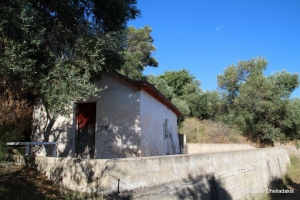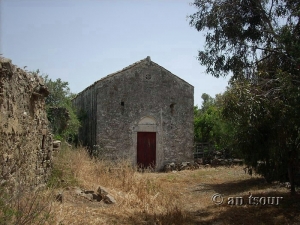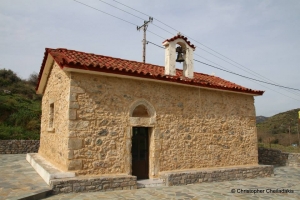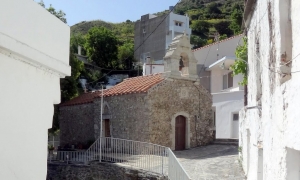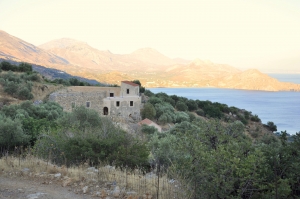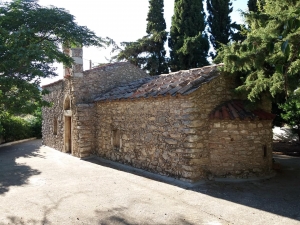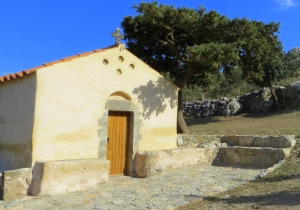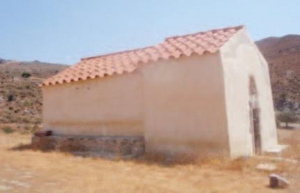In an area literally hidden in olive trees and other trees below the village Selia, province St. Basil of Rethymnon we meet the temple of Saints Fotis and Anikitos. The chapel is reached through a dirt road from Sellia village. The church is small, oblong and single-spaced and with really austere exterior. The whole temple over the years has taken a strong slope since the area has probably collapsed and so the church leans on the sides.
The monastery of Saint John at location Voulgaris today is uninhabited and only the church of St. John the Baptist (celebrating on June 24) and a few traces of cells survive. The monastery operated probably from the 15th century and soon gained a huge fortune (thousands of olive trees).
At position Bale, just before entering the village of St. Basil in southern Rethymno, we meet the Byzantine church of the Life Giving Spring (Zoodohos Pigi). The church celebrates every year on the first Friday after Easter and is built on an elevated position which makes it easily visible from all sides.
At the eastern end of the village Melambes, we meet the Byzantine church of Agia Paraskevi bearing frescoes of the 14th century, divided in two phases. The temple is built next to a spring with cool water and covered by a large plane tree; even we meet the custom that the temples next to water springs were dedicated to Saint Paraskevi, the saint patron of the eyes.
The small monastery of Michael Archangel is located at position Finikias, over the stream that forms the beautiful palm wood of Souda. Phoenix (Finikas), as it is known, was a dependency of the monastery Prophet Elias in Roustika and today belongs to the parish of Sellia.
The temple of Savior Christ is located at Akoumia of Agios Vasilios and is dedicated to the Transfiguration of the Savior (celebr. 6 August). The original single-nave church dates back to the 13th century and was later extended to the west, and now it is at a lower level than the ground. Inside there are frescoes of the 14th century, among which we can see the church's founders.
The church of Saint Photine (Agia Fotini) is located east of the Preveli Monastery and very close to the imposing Kourtaliotis gorge and the beach of Preveli. It is a small single-nave with a simple exterior, with only one decorative element; a cross with four pinakia (ornamental round ceramic plates) above the entrance.
The church of Saint George (Agios Georgios) in position Xylomacheri is located east of the Preveli Monastery, very close to the imposing Kourtaliotis Gorge and at the exit of the Fratiano Gorge. It is a small one-room arched-vaulted church dating from the mid-13th century, which was later expanded to the west.











